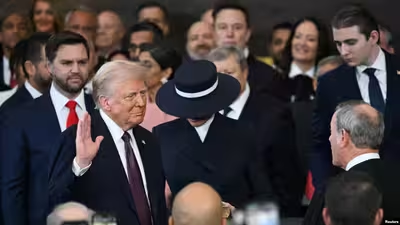43 years ago, on July 25, 1980, Vladimir Vysotsky, an artist, musician and poet, who is often compared to Pushkin in importance for Russian literature, died. About what preceded the death of Vysotsky and what versions of his death were put forward by his contemporaries – in the material of RIAMO.
Vladimir Vysotsky: “I have already been buried several times”
In the 70s, popular rumor “buried” Vladimir Vysotsky several times. From time to time there were a variety of rumors: “Vysotsky shot himself”, “Vysotsky hanged himself” … Actor Valery Zolotukhin said: “Two hours before meeting with Vysotsky in Riga, on the set of Mitta, I was told reliably that he choked on a fish bone.”
Fellow artists regularly called Vladimir Semenovich to make sure that everything was in order with him. He himself said at one of the concerts: “I have already been buried several times, left several times, served several times, and such terms that I have to live for another hundred years …”.
In fact, the artist survived two clinical deaths, became injured in several accidents and even ended up in intensive care, and also repeatedly. Perhaps it was these cases that gave rise to regular rumors about Vysotsky’s death.
Alcohol and drugs
Numerous biographers and colleagues of the bard have no doubt that he suffered from alcohol addiction almost from his youth. With age, the “necessary” doses of alcohol increased, the need to drink became more and more acute, and the hangovers that “covered” Vysotsky in the morning became heavier. A close friend of the artist, Valery Yanklovich, dedicated the documentary “Vladimir Vysotsky. The Last Year”, in which he argued that dependence on morphine was the result of ill-conceived actions of doctors. When a musician had a particularly long and heavy binge, doctors had to be called, who alleviated the patient’s condition with the help of drugs.
It is believed that Vysotsky received the first injection of the drug – according to various sources – in 1975 or 1977, and the offer came from a doctor who, noticing the serious condition of the artist before the rehearsal, advised to alleviate his well-being with just one injection. At that time, no one thought that this injection would lead to persistent dependence.
The artist laid out at the performances, as they say in the actor’s environment, “on the rupture of the aorta.” It was especially difficult for him to play a role in Hamlet, and in order to recover from the performance, Vysotsky injected himself with a drug. This did not happen every day or even every week, but even small doses gradually formed an addiction.
When Vysotsky was on the verge of death
Events that can be seen in the film “Vysotsky. Thank you for being alive”, partly repeat the real story that happened to the artist in 1979 during a visit to Bukhara. The fact that the state of health of the bard was already far from ideal is evidenced by the fact that, in addition to the administrator, he brought with him on tour the resuscitator Anatoly Fedotov. And for good reason: shortly before the start of the Bukhara concert, Vladimir Semenovich became ill: another injection was required.
Further, the opinions of biographers and friends of Vysotsky diverge. It is known that the “last love” of the artist, Oksana Afanasyeva, by hook or by crook brought him the necessary drug from Moscow to Bukhara. There is also a version that Vysotsky could not wait and went to the market, where he bought a certain anesthetic dental drug “from under the floor” from local doctors.
One way or another, the injection was made, after which the artist was literally on the verge of death. In the film “Vysotsky. Thank you for being alive” the version was chosen that the poet’s heartbeat stopped, and a resuscitator friend was forced – as a last resort – to make an injection in the heart. It happened exactly one year before the death of the bard – August 25, 1979.
However, there are other versions of what happened that day. Doctor and writer Mark Tsibulsky in the article “Death That Was Not”, for example, claims that the artist had “just a deep faint.” Mark Tsibulsky believes that the drug provoked a catastrophic drop in pressure, which was mistaken for clinical death. In the same article, he mentions that after visiting the Bukhara market, the artist had severe poisoning, which could also lead to serious health problems.
The Last Hamlet: Vysotsky’s Performance on July 18, 1980
The artist led the fight against alcohol and drug addiction for several years – he was “sewn up”, underwent a blood purification procedure, but this did not help: the dependence turned out to be stronger every time. In the summer of 1980, Vysotsky continued to give concerts and play performances, although friends noted that the artist’s health had deteriorated markedly. The last concert of Vladimir Vysotsky was held on July 16, 1980. At the same time, some of the audience later recalled that Vysotsky felt great, joked a lot and told stories from childhood, while others said that the musician looked tired and unwell.
The last performance of the artist – the same “Hamlet”, which required maximum efficiency – was held on July 18 at the Taganka Theater. The administrator of the theater, Vladimir Yanklovich, recalled that on July 22, Vysotsky promised him to finally get rid of his addictions and come to grips with his health – perhaps even go to the remote taiga for this. But he did not have time for any of this.
How Vladimir Vysotsky died
July 24 was really difficult for Vysotsky and his friends: according to those who were with him in the apartment, the artist was almost insane, rushing around the rooms, screaming. Anatoly Fedorov tried to alleviate the suffering of his friend with sedatives, but there was no effect.
Then it was decided to call specialists from the Sklifosovsky Research Institute. The doctors deliberated for a long time, but came to the conclusion: due to the severity of the condition and the presence of a large number of drugs in the blood, it was impossible to transport Vysotsky. Hospitalization was scheduled for the next day. However, on the night of July 25, the popularly beloved artist died at the age of 42.
Resuscitator Anatoly Fedotov later told about the incident: “I was from the shift: tired, exhausted. I lay down and fell asleep – probably at three o’clock. I woke up to some ominous silence – as if someone had pulled me. And to Volodya! The pupils are dilated, there is no reaction to light. I let me breathe, and my lips are already cold. It’s late! Between three and half past five in the morning there was a cardiac arrest against the background of a heart attack.
The causes and versions of Vysotsky’s death are true and not so true
However, the doctor’s conclusion raised many questions from Vysotsky’s fans. Again, among the rumors were suicide, death due to drug overdose or alcohol poisoning, one of the neighbors claimed that poison was poured into his drinks. There was also a version that because of the Summer Olympics in Moscow, control over the release of drugs was tightened, and the death of the artist was caused by a sharp rejection of drugs that had become familiar to him. Particular questions were raised by the fact that the autopsy of the body was not carried out – according to one version, at the behest of the artist himself, on the other – at the request of family and friends who wanted to hide the traces of drug addiction.
Some fans conducted their own investigation and “found out” that resuscitator Fedotov gave the artist too many sedatives, and Vysotsky secretly washed them down with alcohol, because of which his heart could not stand it. Anatoly Fedotov was also accused of not following the position of the body of an unconscious patient, and he suffocated when his tongue blocked the airways.
There were even rumors that Fedotov was sent to the artist by the special services – precisely in order to control or even eliminate the “not too Soviet” author. In favor of this version in the program “Live” in 2015, the former district policeman Pavel Nikolaev, who was in charge of the house where Vysotsky lived and died in 1980, spoke out. Nikolaev saw how on July 25 a lot of black limousines with KGB officers and the investigative apparatus of the Ministry of Internal Affairs gathered in the courtyard of the house – which means that special attention was paid to the death of the poet at the state level.
Pavel Nikolaev himself, having studied the materials of the case, came to the conclusion that with a high probability Vysotsky was killed by friends – through negligence. When he began to row, they supposedly wrapped him tightly in a sheet and carried him to the balcony, where he died of hypothermia and vasospasm.
Despite the nationwide popularity, the death of the artist was reported only by two newspapers and a small sign at the box office of the Taganka Theater. The main newsworthy these days was the Olympics-80, and the country’s leadership probably considered it inappropriate to publish mourning news against the backdrop of general excitement around the Olympic Games.
And yet, tens of thousands of people came to the farewell ceremony with the artist at the Taganka Theater. Not a single ticket for failed future performances with the participation of Vysotsky was handed over.





















